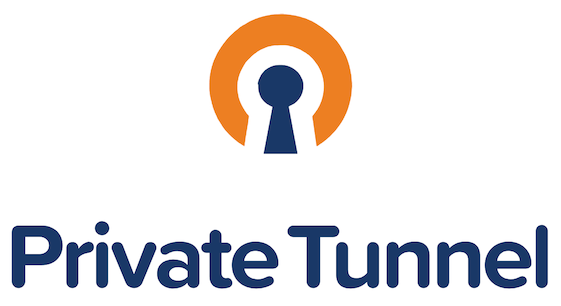Unlock the Secrets of ISO 45001 Comprehensive Training for Safety Leaders
iso 45001 training

I. Introduction
A. Overview of ISO 45001 and Its Importance
ISO 45001 is the international standard for Occupational Health and Safety (OHS) management systems. It provides a framework for organizations to ensure a safe and healthy work environment for their employees. By adopting ISO 45001, companies can prevent work-related injuries and illnesses, improve workplace safety culture, and ensure compliance with regulatory requirements. This standard helps organizations proactively identify risks, take preventive actions, and continually improve their OHS management systems.
B. Why ISO 45001 Training is Essential
ISO 45001 training is essential for anyone involved in occupational health and safety management. It ensures that employees, managers, and safety professionals understand the requirements of ISO 45001 and how to implement them within the organization. With proper training, employees can identify hazards, assess risks, and manage OHS systems effectively, which ultimately leads to a safer working environment. Additionally, certified ISO 45001 professionals can guide organizations through the certification process, making training crucial for organizational success.
C. Purpose of This Blog – Understanding ISO 45001 Training
This blog aims to provide a comprehensive understanding of ISO 45001 training, including what it entails, its benefits, and the different types of training programs available. It will also help readers understand how to select the right ISO 45001 training program based on their needs, ensuring that they are equipped with the necessary skills and knowledge to implement a robust OHS management system in their organization.
II. What is ISO 45001?
A. Definition and Overview of ISO 45001
ISO 45001 is a globally recognized standard for Occupational Health and Safety (OHS) management systems, designed to improve workplace safety and reduce workplace accidents and injuries. The standard is based on a risk-based approach, allowing organizations to proactively address safety issues. ISO 45001 applies to all types of organizations, regardless of size, industry, or location, and is intended to integrate seamlessly with other management system standards such as ISO 9001 (Quality Management) and ISO 14001 (Environmental Management).
B. Key Elements of the ISO 45001 Standard
The ISO 45001 standard consists of several key components, including leadership and worker participation, hazard identification, risk assessment, and the establishment of control measures. It requires organizations to set clear objectives for occupational health and safety and monitor performance regularly. The standard also emphasizes continual improvement, ensuring that organizations constantly evaluate their OHS systems to identify and address new risks and opportunities.
C. Benefits of ISO 45001 for Organizations
ISO 45001 provides a wide range of benefits to organizations. It enhances employee safety and well-being by systematically identifying and mitigating risks. The standard also helps organizations comply with legal and regulatory requirements, reducing the risk of legal penalties. Moreover, adopting ISO 45001 can improve overall operational efficiency, reduce absenteeism, and increase employee morale, all of which contribute to better business performance and long-term success.
III. Benefits of ISO 45001 Training
A. Enhancing Workplace Safety
ISO 45001 training helps organizations enhance workplace safety by educating employees and managers about the importance of identifying hazards and assessing risks. Trained professionals can develop and implement effective risk control measures, which significantly reduces the likelihood of workplace accidents. With the proper training, employees can be more proactive in identifying potential hazards before they cause harm, ensuring a safer and healthier working environment for everyone.
B. Reducing Accidents and Injuries
The goal of ISO 45001 training is to reduce workplace accidents and injuries by providing employees with the knowledge and skills needed to prevent incidents. By understanding the causes of workplace accidents and learning how to mitigate risks, trained professionals can create safer workplaces and reduce the frequency and severity of injuries. This training also helps organizations develop emergency response plans and ensure that safety protocols are followed.
C. Ensuring Compliance with Legal Requirements
ISO 45001 training ensures that organizations meet legal and regulatory requirements related to occupational health and safety. By understanding and implementing the standards outlined in ISO 45001, organizations can avoid legal penalties and fines associated with non-compliance. Additionally, ISO 45001-certified organizations are better equipped to respond to audits and inspections, providing confidence to stakeholders, customers, and regulatory bodies that the organization is committed to maintaining a safe work environment.
IV. Types of ISO 45001 Training Programs
A. ISO 45001 Internal Auditor Training
ISO 45001 Internal Auditor training is designed to help professionals assess and evaluate their organization’s OHS management system. This training teaches individuals how to conduct internal audits, identify areas for improvement, and ensure compliance with ISO 45001 standards. Internal auditors play a key role in helping organizations maintain their certification and continually improve their safety practices.
B. ISO 45001 Lead Auditor Training
ISO 45001 Lead Auditor training is for professionals who wish to lead audits of organizations seeking ISO 45001 certification. This advanced training program teaches individuals how to plan, conduct, and manage audits at a strategic level. Lead auditors are responsible for assessing an organization’s entire OHS management system and providing recommendations for improvement. Upon successful completion, participants are qualified to lead audits and guide organizations through the certification process.
C. ISO 45001 Awareness and Implementation Training
ISO 45001 Awareness and Implementation training provides a general overview of the ISO 45001 standard and its key components. This program is suitable for professionals who are new to the standard or want to understand how to implement the OHS management system in their organization. It covers topics such as risk assessment, hazard identification, and developing an action plan to improve workplace safety.
V. How to Choose the Right ISO 45001 Training Program
A. Accreditation and Recognition
When choosing an ISO 45001 training program, it is important to ensure that the course is accredited by a recognized body. Accredited programs ensure that the training meets global standards and provides participants with the knowledge and skills needed to apply ISO 45001 effectively. Accreditation also ensures that the certification received is recognized by employers and regulatory bodies.
B. Course Content and Structure
The course content and structure are critical factors when selecting an ISO 45001 training program. Look for programs that offer comprehensive coverage of the ISO 45001 standard, including risk management, hazard identification, and safety management techniques. A well-structured course will include practical examples, case studies, and assessments to help learners apply the concepts effectively.
C. Delivery Mode: Online vs. In-Person
ISO 45001 training is available in both online and in-person formats. Online training offers flexibility and convenience, allowing participants to complete the course at their own pace and from any location. In-person training, on the other hand, provides more direct interaction with instructors and hands-on experience. Consider your learning preferences, availability, and the specific needs of your organization when choosing the best delivery mode.
VI. Conclusion
A. The Growing Importance of Occupational Health and Safety
As workplace safety becomes an increasing priority across industries, ISO 45001 training is becoming more essential than ever. Organizations that prioritize occupational health and safety create a more productive and sustainable work environment, improving employee satisfaction and reducing operational risks.
B. Final Thoughts on ISO 45001 Training
In conclusion, ISO 45001 training is an investment that pays off by ensuring a safer workplace, reducing accidents, and helping organizations stay compliant with legal requirements. Whether you are looking to become an internal auditor, lead auditor, or simply gain awareness of ISO 45001, the right training will equip you with the tools to improve occupational health and safety practices and help your organization thrive.
What's Your Reaction?
























